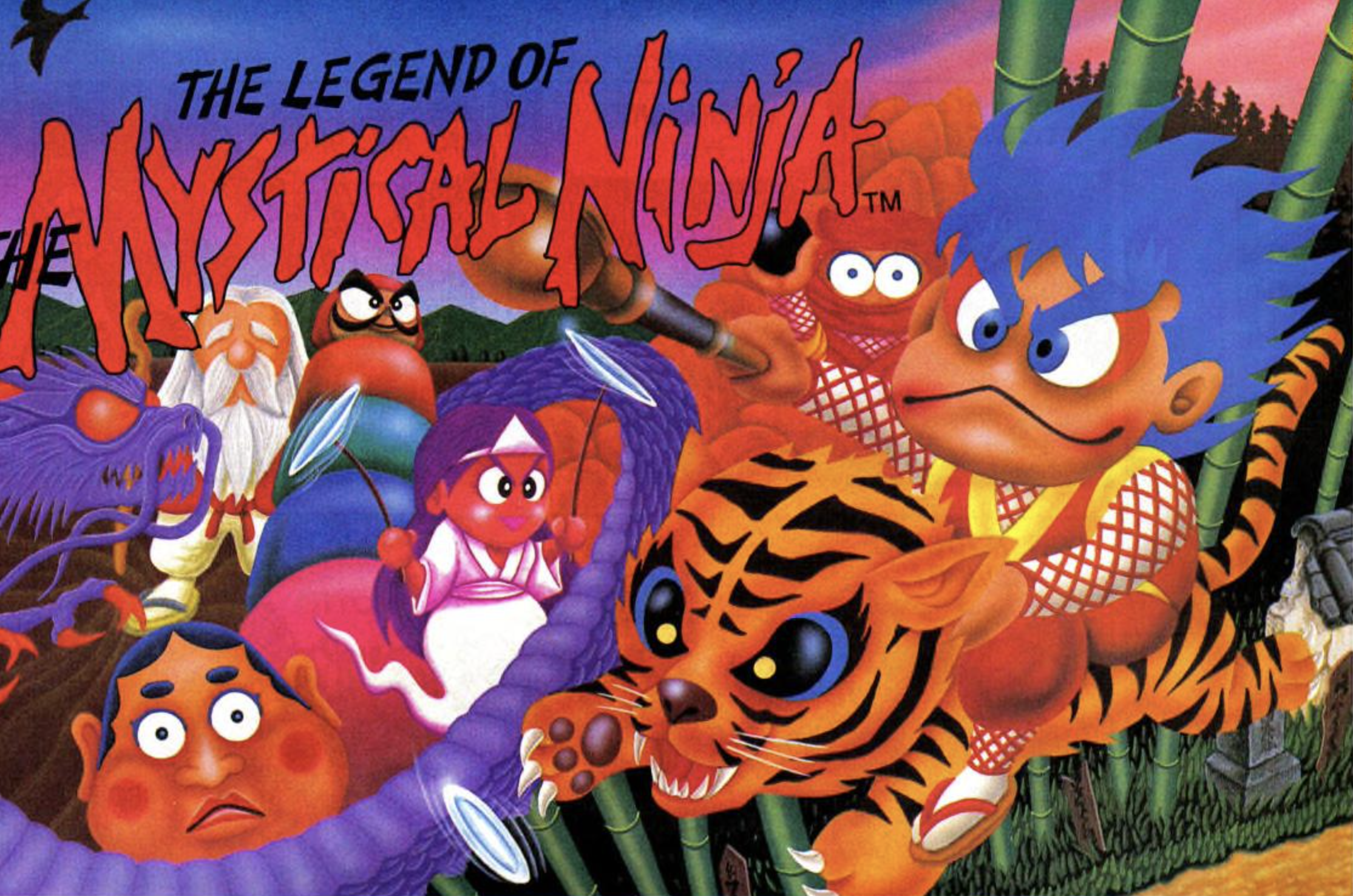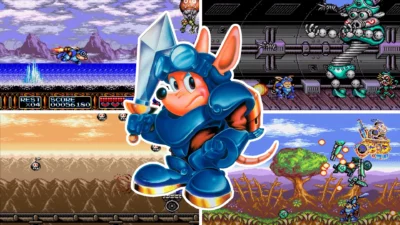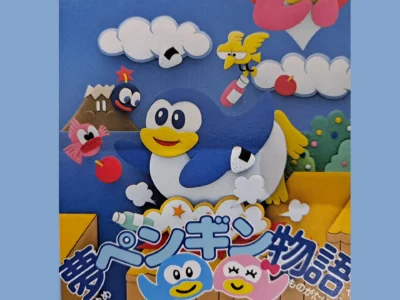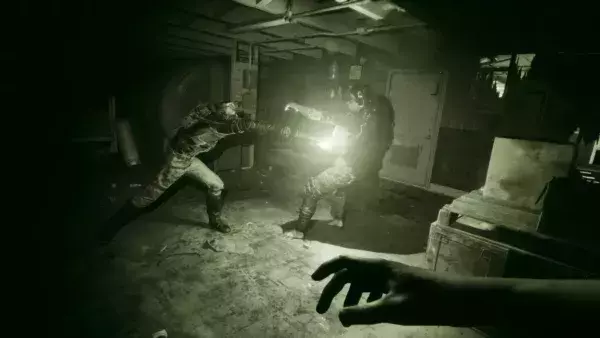We explore Konami’s underappreciated Ganbare Goemon series, known as Mystical Ninja over here, and the games the West never got…
Konami’s Ganbare Goemon series has had a bit of a spotty history in the West, with only six titles ever receiving an official release outside of Japan. That’s in spite of the series containing roughly 30 games in total, released across various consoles and handheld devices. This has resulted in the Goemon series being a difficult one to keep track of for western fans. But, regardless, it’s still managed to develop a cult following due to its odd mix of action and comedy. Over the last few months, Wireframe set out to find out as much as it could about this cult series, speaking to ex-Konami staff members who were involved to tell us more about the games, their origins, and why they were released so sporadically in the West. To tell this story, though, we need to travel all the way back to 1986.
Arcade Origins
You see, despite The Legend of the Mystical Ninja for the Super Nintendo being the first Goemon game that was ever released overseas, the Goemon series actually started in Japanese arcades with Mr. Goemon in 1986. This was a side-scrolling action game developed in Konami’s Osaka offices that focused on a more traditional depiction of legendary 16th-century thief Ishikawa Goemon, as he battles his way through demons and ninjas to save Edo from a terrible new threat.
Of course, you have a few tricks up your sleeve in order to accomplish this: stomping on enemies, collecting pick-ups, and using your trusty pipe as a weapon, with the ultimate goal being to reach the end of each of the game’s four stages. For fans of the later Goemon games, Mr. Goemon will probably look pretty different to what you might expect. Goemon has yet to receive his iconic blue hair, and characters like Ebisumaru, Yae, Sasuke, and even the robot Impact have yet to be introduced. This was case for the next title in the series too, Ganbare Goemon! Karakuri Dōchū, for the original Famicom. This console sequel also lacked the comedic dialogue and characters that would become staples of later games, and Goemon had still yet to take on his classic look.
Ganbare Goemon! Karakuri Dōchū was an action-adventure which again tasked you with fighting through stages and collecting power-ups, but it also introduced additional stores that you could enter in order to buy items, and featured both top-down and first-person perspectives. Both games were modest hits for Konami when they first came out, with Mr. Goemon charting on Game Machine’s 25 Best Hit Games for arcade titles, while Ganbare Goemon! Karakuri Dōchū did well enough to warrant an additional port for the MSX.
Later, in 1989, the Famicom team released another sequel, Ganbare Goemon 2. This was the first title in the series to start incorporating comedy explicitly into the game, inspired by the Manzai-style of stand-up often associated with the Osaka region. For those unfamiliar, Manzai is a traditional style of Japanese double-act comedy, typically featuring a straight man and a funny man trading gags at high speed. These jokes are often characterised by puns, wordplay, or mutual misunderstandings. To be able to implement this into the game, the Goemon team gave the character a sidekick named Ebisumaru, based on the Japanese thief Nezumi Kozō (who appeared as the second playable character in the MSX version of Ganbare Goemon). This character was modelled after Konami employee Etsunobu Ebisu, who also worked on the game as a programmer. Ebisumaru wasn’t the only thing Ganbare Goemon 2 contributed to the identity of the series, however.
It was also the point at which the team began including the historical anachronisms that would later come to exemplify the series, such as giant robots and children’s toys, such as pogo sticks. All of this makes Ganbare Goemon 2 an important transitional title, but the series wasn’t yet finished evolving.
Super Goemon!
In 1990, Konami released an RPG for the Famicom featuring the character, called Ganbare Goemon Gaiden: Kieta Ōgon Kiseru. This was the first game to feature the modern design of the character on the cover, depicting him with a big bushel of blue hair. It also marked the first appearance of series’ regular Yae, a female ninja who could join your party.
Ganbare Goemon Gaiden: Kieta Ōgon Kiseru follows Goemon’s attempt to recover a 1000-year-old pipe that was stolen from his altar while he was away travelling. Together with his partner from the last game, Ebisumaru, he sets off on an adventure across Japan, battling monks, sumo wrestlers, and cyborgs to reclaim this treasure. According to the former Konami staff we spoke to, Ganbare Goemon Gaiden: Kieta Ōgon Kiseru released at an interesting time for Konami. As the Super Famicom was scheduled to release later in 1990, Konami had already begun setting up a specific team to develop for the console.
As part of this new initiative, members of the Famicom Osaka team were moved across to this new department, with Ganbare Goemon! Karakuri Dōchū producer Shigeharu Umezaki also being among this group. As such, there were now two separate Goemon teams working on original games across the two machines.
One former employee explains: “With the release of the Super Famicom, the company established a new development department focused on it. And as the Super Famicom became more popular, staff gradually moved away from the Famicom department to the Super Famicom department. The ultimate result of all of that was that the SFC division inherited the development culture – the way we made action games and such – of the Kansai FC development department.”
Because of this change, only one year after Ganbare Goemon Gaiden: Kieta Ōgon Kiseru, Konami released Ganbare Goemon: Yukihime Kyūshutsu Emaki (or The Legend of the Mystical Ninja, as it was called overseas) for the
Super Famicom. This was the first title for the new console and was a return to the classic side-scrolling gameplay of the first two Goemon games for the Famicom. It was also the first game to be localised for an international audience.
Noticing some strange goings-on in their hometown of Oedo, Goemon and Ebisumaru (dubbed Kid Ying and Dr. Yang in international versions) set off to investigate the cause of the disturbances, before encountering the plight of the kidnapped Princess Yuki who they then endeavour to rescue.
With the game so steeped in Japanese culture and history, you might think that western reviewers would struggle with what to make of the game, but that really couldn’t be further from the truth. Most publications published strong reviews – Nintendo magazine N-Force gave it a 95% in its debut issue, writing: “With The Legend of the Mystical Ninja, Konami have produced a winner – oodles of character, excellent graphics, marvellous ditties to get your toes tapping throughout, more depth than the Grand Canyon but, most striking of all, is the fantastic humour…” Computer & Video Games, meanwhile, gave it 92 out of 100, with writer Tim Boone describing the game as “totally original, utterly vast, and darned funny, to boot”.
Ganbare Goemon had finally arrived in the West. However, just as soon as it had appeared, the spiky-haired thief disappeared again, with the next few Goemon titles failing to see a release overseas.
In-between The Legend of the Mystical Ninja and the next Goemon game to come out in Europe and North America, Mystical Ninja Starring Goemon for the Game Boy, Konami developed six games in the popular series. This included 1992’s Ganbare Goemon Gaiden 2: Tenka no Zaihō, a Famicom sequel to Ganbare Goemon Gaiden: Kieta Ōgon Kiseru; as well as Ganbare Goemon 2: Kiteretsu Shōgun Magginesu and Ganbare Goemon 3: Shishijyūrokubei no Karakuri Manji Katame, sequels to The Legend of the Mystical Ninja. None of these were released outside Japan, but they would occasionally be referenced in magazines like Electronic Gaming Monthly.
Mystical Ninja
Asked about why Ganbare Goemon struggled to make it overseas, one Konami source, told us: “With the games essentially being stories that take place during the Edo period, they’re products for the Japanese market. In fact, each game was released at the end of the year so that players could enjoy it during the New Year holidays. Some of the games were localised, but they weren’t hits the way they were in Japan.”
To fans in the West, it looked like the Ganbare Goemon series was never going to see another international release, then something unexpected happened. In 1997, English-speaking fans got not one, but two games based on the character, both confusingly titled Mystical Ninja Starring Goemon. One was a Game Boy title that featured a top-down perspective and Zelda-esque adventuring, while the other was for the N64, and took the series into 3D.
It’s this later title that most western fans will likely remember. It followed the bizarre story of a group of performers called the Peach Mountain Shoguns who are attempting to turn Japan into a westernised theatre. Goemon and his three friends (Ebisumaru, Yae, and Sasuke) are the only ones who can stop them, so must set out across the game’s open world, beating its many dungeons to foil their plot.
In contrast to The Legend of the Mystical Ninja, critics gave Mystical Ninja Starring Goemon for the N64 a more mixed reception. One of the best reviews came courtesy of the Official Nintendo Magazine, who gave it 90 out of 100 and called it “a sprawling, enjoyable adventure that works its socks off to square up to Mario”. But this was very much the exception. Other publications, including GameSpot, gave it somewhat less enthusiastic reviews, criticising its clumsy camera, frame rate, and the accessibility of the game for western players.
GameSpot’s Peter Bartholow wrote at the time: “Perhaps Mystical Ninja’s biggest problem for US gamers is the blinding cultural difference. The game’s text is mostly for humorous intent and plot-furthering, but everything from Japanese architecture to religious practices somehow becomes an issue in playing Mystical Ninja. For instance, some players may have difficulty exiting the first room of the game because old-style Japanese doors look like walls to Americans.”
Despite these reservations, Goemon hit the height of its popularity during this period. Not only was an anime show under development, but Konami also commissioned three further video games. One was a handheld game for the Game Boy Color called Ganbare Goemon: Tengu-tō no Gyakushū!, which was being developed externally at TOSE and was another RPG adventure. There was also a 3D PlayStation title developed at Konami’s Nagoya studio, called Ganbare Goemon: Kuru Nara Koi! Ayashige Ikka no Kuroi Kage. And the final title was Ganbare Goemon: Derodero Douchuu Obake Tenkomori, a sequel to Mystical Ninja. Only the third from this list of games was released internationally.
The Great Adventure
Mystical Ninja 2 Starring Goemon (or Goemon’s Great Adventure, as it was called in North America) came out in 1998. In contrast to the first game, this sequel was played from a 2.5D perspective, meaning that instead of exploring an open world, you would need to select stages from a map screen and then battle your way from one end of a level to another. There are usually several different pathways to take in each stage, adding some non-linearity into the mix. And you can also visit towns in-between levels to pick up quests and purchase items.
Mystical Ninja 2 Starring Goemon follows Goemon and his friends as they must once again try and save Japan. But this time around, it’s not a gang of evil theatre-goers who are threatening the nation, but a cross-dressing nun named Bismaru (who previously appeared in Ganbare Goemon 3: Shishijūrokubē no Karakuri Manji Gatame) and the newly revived lord of the underworld, Dochuki. Like many of the games that came before, the plot features the same mix of absurdist humour and Japanese cultural references, with Konami not trying to tone down or reinvent the series to appeal to a broader audience. As such, concerns about its accessibility reappeared in western reviews of the game. These same critics were a bit more divided on how it stacked up against its predecessor.
IGN’s Peer Schneider (who gave the first game a 7.6 out of 10) gave the sequel an 8, and wrote: “Goemon’s Great Adventure still emerges as Konami’s best Goemon game since Goemon 2 and the translation is much more faithful than Mystical Ninja and co. A funny, addictive co-op adventure that every 2D platform game fan should add to their collection.”
GamePro, meanwhile, gave it a decent score of 3.5 out of 5 and wrote: “After the quirky fun of his last N64 adventure, Goemon’s Great Adventure is a bit of a letdown.”
Despite garnering a cult following in the West during this period, Mystical Ninja 2 Starring Goemon would be Goemon’s last adventure to be localised into English. Similar to what happened a few years earlier, Goemon simply vanished, with subsequent titles releasing exclusively in its home country.
There were several handheld titles for Game Boy Color in the years that followed, like Ganbare Goemon: Mononoke Dōchū Tobidase Nabe-Bugyō! and Ganbare Goemon: Seikūshi Dynamites Arawaru!!, as well as another 3D PlayStation adventure called Ganbare Goemon: Ōedo Daikaiten. The final new release, however, came in 2005 and was called Ganbare Goemon: Tōkaidōchū Ōedo Tengurikaeshi no Maki. This was a Nintendo DS title that used an ukiyo-e-style aesthetic. Ever since then, Ganbare Goemon’s characters have largely been kept to cameo roles in other games, including Super Smash Bros. Ultimate, or as the star of Konami’s pachislot machines. It’s rather a sad fate for a character who was once so popular.
We asked one former Konami staff member whether he thought the series would ever make a return and he told us: “It’s been a long time since I left Konami, so I have no idea. My programs have been analysed and ported several times in attempts to remake the games on newer hardware, but on top of my code being hard to read, it would be pretty large in scale, so it would involve far too much work and ballooning costs in personnel, so I think it’d end up being a big loss. As such, I can’t say I recommend they do it.”
Despite this grim assessment on things, there is some positive news for fans of the game. Good-Feel, a studio made up of several Goemon veterans that is headed up by Etsunobu Ebisu (aka Ebisumaru himself), is currently working on an original game that seems incredibly reminiscent of Goemon, mixing humour with traditional folklore. It’s currently unknown when this will launch or whether this will continue the trend of not releasing overseas. But for now, we can surely hold out hope.













